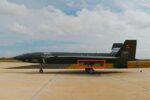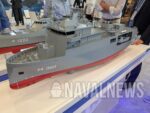In a significant step toward enhancing expeditionary warfare capabilities, the Australian Army has commenced trials to evaluate the feasibility of deploying its newly acquired M1A2 SEPv3 Abrams main battle tanks (MBTs) from Royal Australian Navy (RAN) amphibious assault ships. The trials mark a critical milestone in Australia’s broader modernization efforts under the Defence Strategic Review (DSR) and reflect growing regional emphasis on littoral combat readiness.
Context: Strategic Reorientation and Army Modernization
The trials come amid Australia’s strategic pivot toward a more agile and forward-deployable force posture in response to evolving Indo-Pacific security dynamics. The 2023 Defence Strategic Review called for a restructured Army focused on littoral maneuver operations and rapid regional response. As part of this shift, the Australian Army is restructuring into specialized brigades with enhanced amphibious capabilities.
Central to this transformation is the acquisition of 75 upgraded M1A2 SEPv3 Abrams MBTs under Project LAND 907 Phase 2. These tanks are replacing the older M1A1 AIM SA variants delivered between 2007–2008. The new platforms bring significant enhancements in survivability, lethality, networking, and sustainment—key attributes for joint operations across dispersed maritime environments.
M1A2 SEPv3 Capabilities and Challenges in Littoral Context
The U.S.-built General Dynamics Land Systems (GDLS) M1A2 SEPv3 represents one of the most advanced MBT configurations globally. Key upgrades include:
- Improved armor protection with enhanced underbelly and turret defenses
- Next-generation communications suite enabling networked C4ISR integration
- Advanced Ammunition DataLink for programmable munitions
- Auxiliary power unit (APU) for silent watch operations
- Upgraded thermal sights and fire control systems
However, at over 73 metric tons combat weight (with TUSK package), deploying the SEPv3 in an amphibious context presents logistical challenges. These include shipboard stowage constraints aboard Canberra-class Landing Helicopter Dock (LHD) ships, ramp weight limits during embarkation/disembarkation via landing craft or well decks, and beachhead mobility limitations in soft terrain.
The Trials: Integration with Canberra-Class LHDs
The recent trials reportedly involved loading multiple M1A2 SEPv3 units onto HMAS Canberra or HMAS Adelaide—Australia’s two Canberra-class LHDs—using their internal vehicle decks and well dock facilities. While exact numbers remain unconfirmed by the Department of Defence (DoD), imagery suggests at least two tanks were embarked for evaluation purposes.
The objective was to assess compatibility with existing shipboard infrastructure including deck tie-down points, elevator clearances, vehicle parking arrangements, and disembarkation procedures using LCM-1E landing craft or Mexeflote pontoons. Testing also examined crew readiness for rapid deployment from sea to shore under simulated operational conditions.
This marks one of the first known instances where Australia has attempted full-scale integration of heavy armor into its amphibious ready group (ARG) concept—a capability long practiced by U.S. Marine Corps but relatively novel within ADF doctrine.
Operational Implications and Doctrinal Shifts
If successful, these trials could redefine how Australia employs armored forces within expeditionary frameworks. Traditionally considered unsuitable for island-hopping campaigns due to their weight and logistical footprint, MBTs like the Abrams offer unmatched firepower against fortified positions or peer adversaries during forced-entry operations.
A potential concept emerging is that of “armored enablers” supporting light infantry or mechanized elements during initial lodgment phases—particularly relevant in scenarios involving contested archipelagos such as Southeast Asia or Pacific islands. However, critics argue that heavy armor may be better suited to mainland defense rather than high-risk maritime insertions.
The Australian Army’s future brigade structure—including a dedicated Littoral Manoeuvre Brigade based in northern Australia—will likely determine how often such capabilities are deployed from sea platforms versus prepositioned ashore via strategic sealift.
Comparative Perspectives: USMC Experience with MBTs at Sea
The U.S. Marine Corps operated M1A1 Abrams tanks aboard Wasp-class LHDs until divesting them entirely under Force Design 2030 reforms that emphasized lighter forces optimized for distributed maritime operations. Their experience highlighted both utility during high-intensity landings (e.g., Iraq) and drawbacks including sustainment burdens aboard ships ill-suited for prolonged heavy armor support.
This precedent offers valuable lessons as Australia explores similar concepts but must tailor them to local geography and force structure realities. Unlike USMC’s global reach requirements, ADF’s focus remains regional—with shorter logistics chains but fewer strategic lift assets overall.
Industry Support and Future Developments
General Dynamics Land Systems is providing support through sustainment packages tailored to Australian conditions via Thales Australia as local partner under LAND 907 Phase 3B. Additionally, discussions continue around integrating robotic combat vehicles (RCVs) or lighter tracked fire support platforms better suited for shipborne ops alongside heavy MBTs.
The outcome of these trials will inform future procurement decisions regarding amphibious enablers—including whether future landing craft designs must accommodate heavier payloads than current LCM-1Es permit (~65 tonnes). It may also influence doctrine updates within Plan Beersheba successor frameworks guiding joint force employment across air-sea-land domains.
Conclusion
The Australian Army’s experimental deployment of M1A2 SEPv3 tanks aboard amphibious assault ships underscores a bold attempt to reconcile heavy armor with maritime maneuver doctrine—a complex but potentially transformative endeavor amid Indo-Pacific uncertainty. Whether these platforms become regular fixtures within ARG rotations or remain niche assets will depend on trial outcomes now underway across RAN vessels operating off northern coasts.









